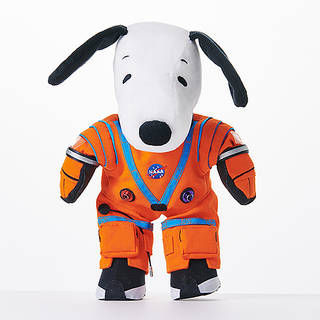From ace to space
- James Tyler
- Nov 7, 2022
- 3 min read
Name a famous aviator who was active in World War I, heavily involved in NASA’s Apollo space program and is still at it with the Artemis Moon mission. If you said everyone’s favorite beagle, Snoopy, you’re no blockhead.
Maneuvering his Sopwith Camel bi-plane (aka doghouse) through the imaginative skies above France during the Great War, Snoopy frequently engaged in aerial combat with his nemesis, the Red Baron. His harrowing battle against the baron, ending in being shot down in France behind enemy lines only to sneak his way to rescue is a memorable part of “It’s the Great Pumpkin, Charlie Brown” TV cartoon classic from 1966.
It was actually in an Oct. 10, 1965, “Peanuts” comic strip that Snoopy first imagined being the famous WWI Flying Ace. A year later came the beloved TV special, then a month after that, the Guardsman released the novelty hit, “Snoopy vs. the Red Baron,” which would climb to the top of the radio charts and sell millions of copies.
So Snoopy’s aeronautical credentials were pretty well known by May 1969 when NASA launched the Apollo 10 lunar mission on May 18. Astronauts Thomas Stafford, Gene Cernan and John Young were the crew of Apollo 10, which was the dress rehearsal for the Apollo 11 mission that first landed humans on the Moon.

NASA had already been working with “Peanuts” creator Charles Schultz during the 1960s. When it came time to name the command module and lunar lander for Apollo 10, NASA had two popular characters close at hand to get people more excited about the program – as if traveling to the Moon wasn’t already a pretty big deal. Good grief!
The command module was officially named “Charlie Brown” and the lunar module “Snoopy.” Apollo 10’s LM was not meant to actually land on the lunar surface, just race above it, searching for good locations for Apollo 11’s “Eagle” lander to make history. Since it was “snooping” out landing sites, according to NASA, the LM was designated “Snoopy.”
Snoopy became such a popular mascot, there’s even an award to recognize NASA workers for achievements on space missions and for safety. The Silver Snoopy pin features Snoopy dancing in astronaut gear. The pins were even flown in space during the Space Shuttle missions before being awarded to recipients.
So now NASA is back with its Space Launch System and Orion spacecraft to return to the Moon. And Snoopy isn’t missing out on the action. He is the zero-g indicator on Artemis 1, the uncrewed flight test for the new system and craft.

Snoopy, dressed in his custom, 10-by-7-inch Orion crew Survival System pressure suit, serves as a visual cue that the space craft has reached the weightlessness of microgravity. Hence, the “zero-g.”
Zero-gravity indicators have a long tradition in space flight, supposedly harkening back to 1961 when Soviet cosmonaut Yuri Gagarin took a doll with him on the first launch of a human into space. The toys float about, offering a playful way to check you’ve reached zero gravity.
With Artemis I, Snoopy continues his long-lived career of heroic air and space endeavors.
Someday, humans will stand amid the red hills of Mars, exploring far beyond our home planet. Surely the former World War I Flying Ace will be right there, too, inspiring a new generation to be cool and dream big!
Image credits:
NASA/Kim Shiflett
Silver Snoopy Award/NASA
Snoopy will launch as the zero-g indicator on board NASA’s Artemis 1 moon mission. 2021 Peanuts Worldwide LLC



Mars temperature: -81 to -220